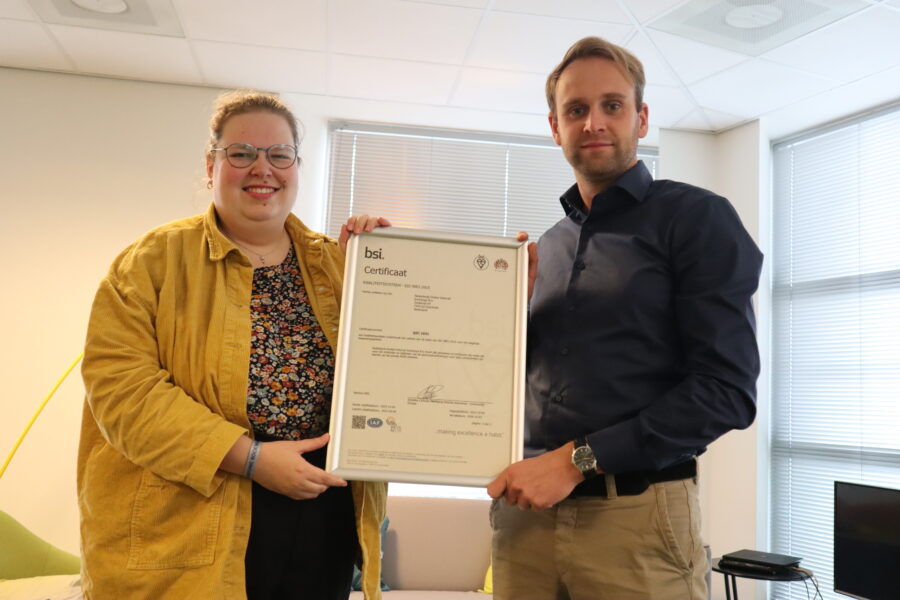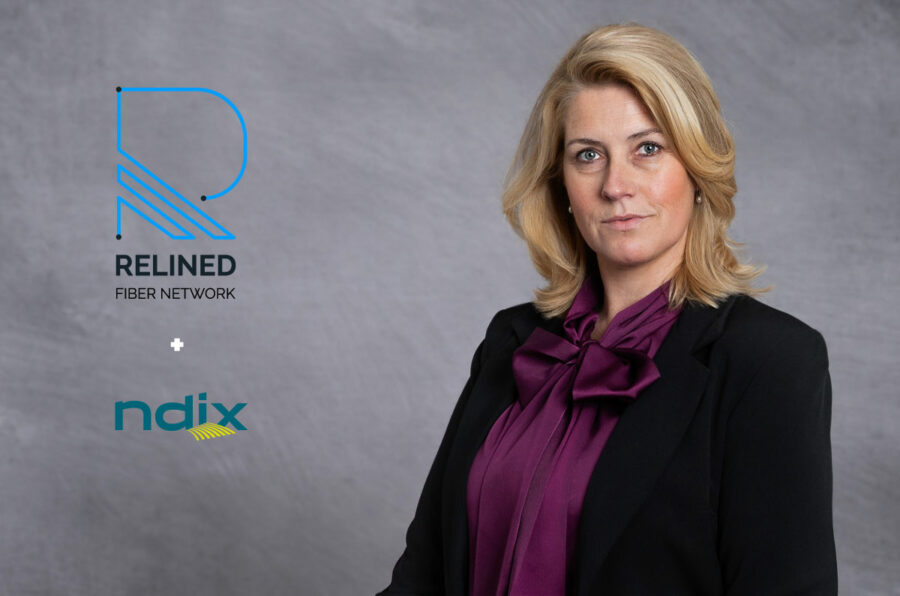The 7 layers: Layer 1 to 3
The OSI model traditionally consists of seven layers. In a visualisation of the model, the layers start at the bottom. For the top layers to work, the layers below must work well. Thus, layer upon layer is applied with the end result being a well-functioning network. At the bottom of the model is the first layer, also called the physical layer. No matter what you want to do within a network, physical cables, hubs and repeaters need to be installed. This is also the layer where the binary information that is coming in is translated into a signal and vice versa.
NDIX works within the second layer. This layer is called the data link layer. This is where it is made possible for the various hardware within a network to communicate with each other by sending data/frames. This is often done through a unique MAC or hardware address that each network card has. At the data layer, Ethernet is used.
Above this lies the network layer, or the third layer. At this point, the user has a cable and the hardware can communicate with each other. However, the data still needs to be sent between networks. This happens in the network layer, where routers also come into the picture, as does the widely known Internet Protocol (IP). The first three layers, the physical layer, data link layer and network layer, are collectively called the media layers. It is these three layers that NDIX deals with the most and together these layers form the foundation for a well-run network.
The 7 layers: Layer 4 to 7
The last four layers are collectively called the host layers. The fourth layer is the transport layer. This layer ensures that transmission between two points runs smoothly. This determines how fast data is transported, whether the data is correct and that the timing of the data is right. This way, the layers after the transport layer no longer have to pay attention to this. The transport layer includes the Transmission Control Protocol (TCP) and User Datagram Protocol (UDP) protocols. TCP ensures that data is transported correctly and securely. To do this, a session is started between the two points between which data is to be transported. This session is not established with UDP, whereas the focus is more on sending data with less regard to where the data ends up. This makes UDP faster, but also less accurate than TCP.
There is also the session layer. This fifth layer allows sessions to be created between network programmes. This way, two programmes can communicate with each other. It is also possible to maintain and break sessions within this layer, which means that efficient communication is ensured.
The presentation layer is also known as the sixth layer. This is where the encryption and compression of data traffic is handled. This encryption is important, for example, when a user wants to order something on a web shop and therefore requires secure transmission of sensitive data. The sixth layer also exists for translation between operating systems and applications. This way, an application looks understandable to the user, but in the background it is ensured that the systems can process the incoming data properly.
The seventh and also the last layer is the application layer. These are the services that a user can use on a device. In web browsers, for example, one of these protocols is HTTP, where there is communication between the web client and the web server. HTTP is used both on the worldwide web (better known as WWW) and on local networks or intranets. When you are using Word, sending an e-mail or making a video call, you are also operating at the application layer.
Alternative models and sublayers LLC and MAC
There are some alternative versions of the OSI model. For example, layers can be merged or sublayers can be created. One such variant of the OSI model is the TCP/IP model. Whereas the OSI model has seven layers, the TCP/IP model has only four. The physical and data link layers are merged into the network interface layer. The third layer remains the network layer or is called the Internet layer, as does the fourth layer or the transport layer. However, the fifth, sixth and seventh layers are merged into one layer, namely the application layer.
It is also possible to subdivide the data link layer into two sub-layers: LLC and MAC. The LLC sublayer sits between the data link layer and the network layer and stands for Logical Link Control. The information given in earlier layers is helped by the LLC by adding some additional information to make the transport better. Network protocol data is also added. The data is then sent towards the network layer. The MAC sublayer is located between the physical layer and the data link layer. Here, a MAC address is added, which helps with source and destination identification. MAC stands for Media Access Control and the MAC address is embedded with the hardware.



